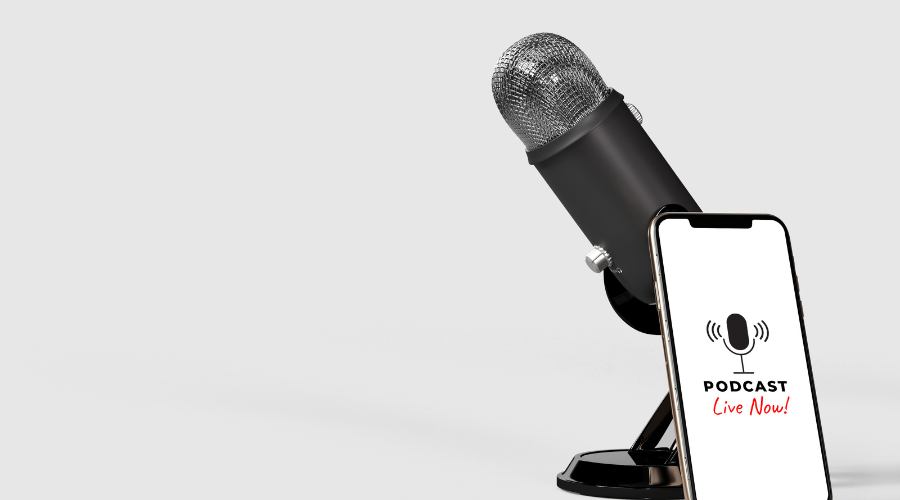Podcasting has seen a significant surge in popularity over recent years, offering people an engaging platform to share their thoughts, ideas, and stories with the world.
Starting a podcast can be an excellent way to connect with like-minded individuals, grow your brand, or simply explore your passion for a specific topic.
The best part? It’s possible to launch your podcast without breaking the bank.
In this blog post, we’ll guide you through the process of starting a podcast for free, covering everything from planning to recording, editing, and promoting your show.
Planning Your Podcast
1. Choosing a Topic
Finding Your Niche
The first step in starting a podcast is to choose a topic that resonates with you and your potential audience.
To find your niche, consider your passions, expertise, and unique perspectives.
It’s essential to choose a subject you’re genuinely interested in, as this will keep you motivated to create content consistently.
Researching Competition
Once you’ve identified your niche, research similar podcasts in the market to assess the competition.
This will help you identify gaps in content, understand the trends, and determine how to differentiate your podcast from others.
2. Defining Your Target Audience
Understanding your target audience is crucial to creating a successful podcast. Consider their demographics, interests, and preferences, and tailor your content accordingly. This will help you attract and retain a loyal audience.
3. Creating a Podcast Structure
Episode Format
Determine the format of your podcast episodes – will they be solo shows, interviews, or a mix of both? Other formats include panel discussions, storytelling, or Q&A sessions. Choose a format that suits your topic and personal style.
Frequency and Length
Decide how often you will release new episodes and their approximate duration. This will help you maintain consistency and manage audience expectations. Aim for a balance between keeping listeners engaged and avoiding burnout.
4. Designing Cover Art and Branding
Your podcast’s cover art and branding should be eye-catching and reflective of your show’s content. Free design tools like Canva can help you create visually appealing cover art without any design expertise.
Recording Your Podcast
1. Finding Affordable Equipment
Microphone Options
Investing in a high-quality microphone is crucial for producing professional-sounding podcasts.
Fortunately, there are affordable options available, such as the Samson Q2U or the Audio-Technica ATR2100x-USB, which provide excellent sound quality without breaking the bank.
Headphones
A good pair of headphones is essential for monitoring your audio while recording. Look for comfortable, closed-back headphones that provide adequate sound isolation.
2. Recording Software
Free Recording Software Options
There are several free recording software options available, such as Audacity, GarageBand (for Mac users), and Zencastr (for remote interviews). These programs provide essential recording and editing tools to help you create polished episodes.
Tips for Recording High-Quality Audio
To ensure optimal audio quality, record in a quiet space with minimal echo or background noise. Experiment with microphone placement and use a pop filter to reduce plosive sounds. Record a test episode to identify and resolve any audio issues before launching your podcast.
3. Preparing Content and Script
Outlining Episodes
Before recording, create an outline for each episode to ensure a smooth flow of content. This will help you stay on track, maintain consistency, and cover all essential points.
Interview Preparation
If your podcast format involves interviews, research your guests thoroughly and prepare a list of questions. This will help you engage in meaningful conversations and extract valuable insights from your guests.
Editing Your Podcast
1. Free Editing
Software Options
There are several free editing software options available to polish your podcast episodes. Audacity is a popular choice for both Windows and Mac users, offering a comprehensive set of editing tools. GarageBand is another excellent option for Mac users, with an intuitive interface and a wide range of features.
2. Basic Editing Techniques
Removing Background Noise
To minimize distractions for your listeners, remove any background noise from your recordings. Most editing software provides noise reduction tools that can effectively eliminate unwanted sounds.
Adjusting Volume Levels
Ensure that your podcast has consistent volume levels throughout each episode. Use the normalization or compression tools in your editing software to balance the audio levels and provide a pleasant listening experience.
3. Adding Music and Sound Effects
Royalty-Free Music Sources
Adding music and sound effects can enhance your podcast’s production quality and make it more engaging. Use royalty-free music sources such as Free Music Archive, Incompetech, or Bensound to find tracks that complement your content without risking copyright infringement.
Creative Commons Licensed Sounds
Creative Commons licensed sounds are another option for adding audio elements to your podcast. Websites like Freesound.org and ccMixter offer a wide variety of sounds and music tracks that you can use for free, provided you follow the licensing terms.
Hosting and Distribution
1. Free Podcast Hosting Platforms
Choosing a free podcast hosting platform is crucial for storing and distributing your episodes. Some popular free hosting options include Anchor, Buzzsprout, and Podbean. Each platform has its pros and cons, so research their features and limitations before making a decision.
2. Submitting Your Podcast to Directories
Apple Podcasts, Google Podcasts, and Spotify
Submitting your podcast to directories like Apple Podcasts, Google Podcasts, and Spotify is essential for increasing visibility and attracting new listeners. These platforms have specific requirements and steps for submission, which can be found in their respective guidelines.
Requirements and Steps for Submission
Ensure that your podcast meets the technical requirements of each platform, such as having appropriate cover art dimensions, an RSS feed, and proper metadata. Once you’ve met the requirements, follow the submission process outlined by each directory.
3. Embedding Episodes on Your Website or Blog
Embedding your podcast episodes on your website or blog can help drive traffic and build your online presence. Most hosting platforms provide embed codes that can be easily integrated into your site.
Promoting Your Podcast
1. Leveraging Social Media
Facebook, Twitter, and Instagram
Social media platforms like Facebook, Twitter, and Instagram can be powerful tools for promoting your podcast. Share new episodes, behind-the-scenes content, and interact with your listeners to build a strong community.
Engaging with Listeners
Responding to comments, messages, and reviews from your listeners can help foster engagement and encourage loyalty. Ask for feedback and involve your audience in shaping future episodes.
2. Collaborating with Other Podcasters
Collaborate with other podcasters in your niche to cross-promote each other’s shows, exchange guest appearances, or co-host special episodes. This can help expand your reach and expose your podcast to new audiences.
3. Guest Appearances and Interviews
Appearing on other podcasts or inviting influential guests on your show can attract new listeners and boost your credibility. Reach out to podcasters in your niche or industry experts to explore collaboration opportunities.
4. Utilizing Email Marketing
Building an email list can be an effective way to keep your audience informed about new episodes and exclusive content. Use free email marketing tools like Mailchimp or MailerLite to create newsletters and maintain communication with your subscribers.
Monetizing Your Podcast
1. Sponsorships and Affiliate Marketing
Monetizing your podcast through sponsorships and affiliate marketing can help generate income to support your show. Reach out to relevant brands or sign up for affiliate programs that align with your podcast’s content and audience interests.
2. Listener Donations and Crowdfunding
Encourage your listeners to support your podcast through donations or crowdfunding platforms like Patreon or Ko-fi. By offering exclusive content or rewards for different support levels, you can incentivize your audience to contribute financially.
3. Selling Merchandise or Digital Products
Another way to monetize your podcast is by selling merchandise or digital products related to your show’s theme. You can create and sell items like t-shirts, mugs, or eBooks to generate additional revenue.
Conclusion
I hope these tips will help you to start a podcast.








